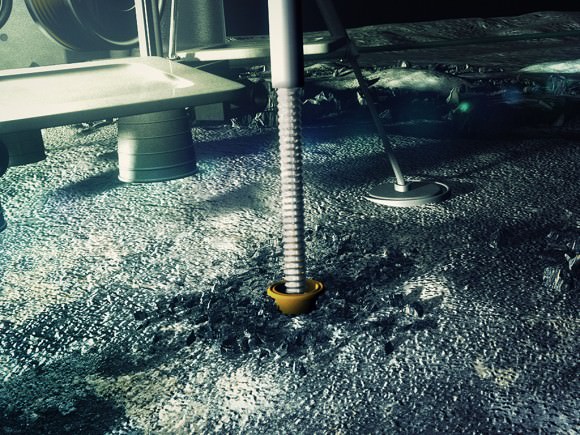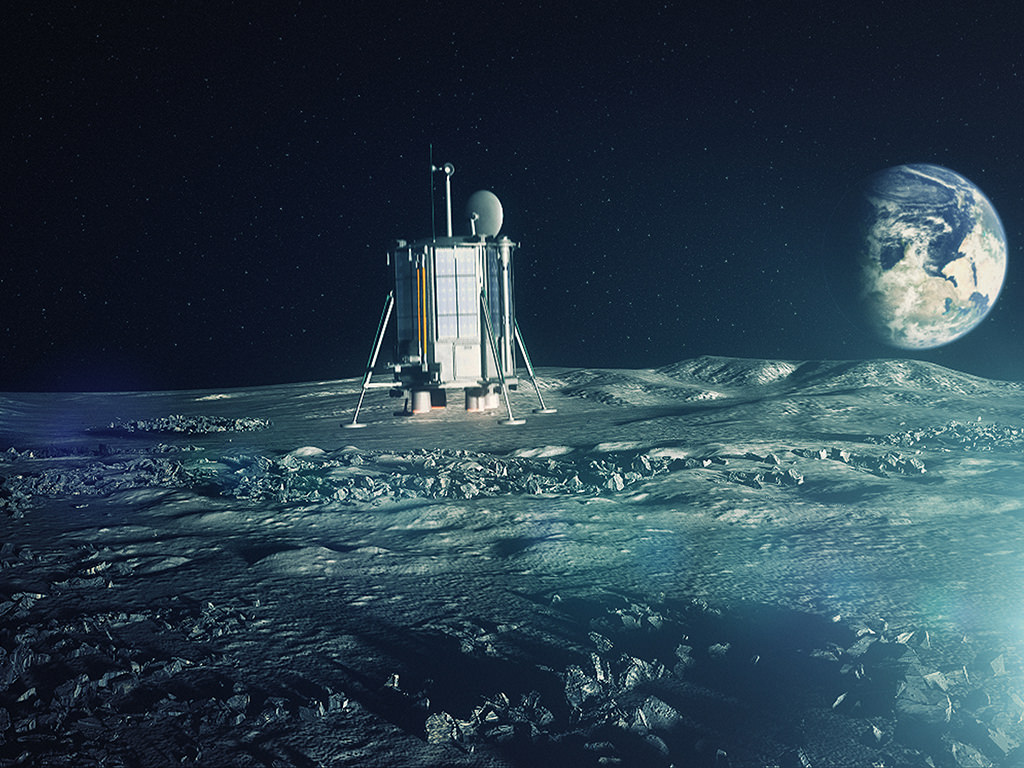Update, Dec. 18, 8:09 a.m. EST: Lunar Mission One closed its fundraising mission the night before at £672,447 ($1,052,413), short of its stretch goal of £700,000.
With just over a day to go in their crowdfunding campaign, a British group hoping to put a robotic lander on the moon in 2024 reached their fundraising goal of $932,000 (£600,000) overnight.
The money is supposed to move the project into more concrete phases after the founders spent seven years quietly developing their concept, but many of the details about the design and funding have yet to be unveiled.
“We plan to send an unmanned robotic landing module to the South Pole of the Moon – an area unexplored by previous missions,” the mission says on its Kickstarter page. “We’re going to use pioneering technology to drill down to a depth of at least 20m – 10 times deeper than has ever been drilled before – and potentially as deep as 100m.
“By doing this,” the statement adds, “we will access lunar rock dating back up to 4.5 billion years to discover the geological composition of the Moon, the ancient relationship it shares with our planet and the effects of asteroid bombardment. Ultimately, the project will improve scientific understanding of the early Solar System, the formation of our planet and the Moon, and the conditions that initiated life on Earth.”

“Stretch goals” for the organization include rewards for backers such as an e-commerce program, a massive open online course for educational purposes, a party for backers in London, and being “a leading role” in World Space Week 2015. The additional money, however, will also be used for drilling studies, putting together the science team and making a work plan.
With the money raised, the project now has the ambitious target of getting their lander on the moon by 2024. According to the schedule, the main mission contract should be awarded by 2017, design and development begins by 2018, and the final build commences in 2021.
RAL Space (which assisted with the Philae comet landing and 200 other space missions, according to the page) is serving as a technical advisor to the board. The project chair of Lunar Missions Ltd. (which is responsible for the project) is Ian Taylor, a former United Kingdom government science minister and co-chair of the parliamentary space committee.
As with other private ventures in space such as Mars One, however, Lunar Mission One is dealing with long timelines, a risky goal and a not-certain guarantee of success.


There are so many wrongs with this project. Even after having collected 1/1000 of the costs according to their own estimate.
Why use the Moon as a time capsule?
Why begin with a super heavy expensive drilling system, instead of with area analysing rovers to determine a useful landing place?
Why drill 20-100 meters deep instead of using radar or ISRO relevant technologies, which would investigate and use the surface.
And the drill held in an arm from the lander, doesn’t look convincing at all. Is there any science and technology behind this at all, or is it just fraudulent slides? I bet this will never happen, there are betting sites which give more back than this con ads on the naive uncritical UT blog. L1 is a fraud.
Why use the moon as a time capsule? Well, if you have drilled a 100m hole in the moon, and taken out the materials for science, you can then backfill it with anything you like. If you have tools to handle the cores, then I doubt if these is a significant extra cost to do this. The lunar poles have less impacts from other bodies than the equator, so it is as good a place as any for a time capsule, and a likely place for future visitors to look. I can’t say I am convinced there is an urgent need for a time capsule if it is to last for a billion years, but I am happy to let them use it to raise money for the rest of the project.
Is it just another country going to the moon that you don’t like?
What the heck are you ranting on about, this is a great project that encourages young people to take interest in the Moon (and EARTHS) past and how asteroids bombarded the Moon and will improve scientific knowledge of our ancient past from so FarAwayLongAgo …..”Ha Ha Ha”